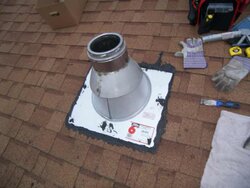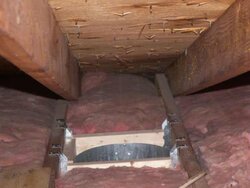I installed my freestanding Regency R6 wood stove myself in December 2007 and it worked great all winter. This is my first wood stove and first time cutting a hole in a roof. Throughout last winter and this summer, when it rained pretty hard I would get a puddle of water on the top of my stove - rainwater would drip down the outside of my stove pipe in the house and fall onto the stove top. Sometimes I would get enough water that it would even puddle on the floor. I figured this was because I did a poor job tarring the flashing into the shingles since I originally only used a single tube of asphalt goo. Earlier this summer I got up into the attic and put a plastic storage box next to the insulation shield and was able to catch the dripping rainwater and had no more puddles.
Last week I went to the hardware store and bought a gallon of asphalt goo and went up on the roof and made a V shaped dam as I saw in a book how building a dam could channel the rainwater away from the roof penetration of a chimney. I also went up to the attic and removed the plastic storage box / drip catcher. Yesterday it rained pretty hard and I had a huge puddle on the floor all around my woodstove! ARGH! I went up into the attic and pulled the pink fiberglass insulation back and found the insulation in the rafter area next to the SS chimney was soaked. I put the plastic storage box / drip catcher back and also propped up the insulation so it will dry out.
It seems water is coming in between the roof plywood / decking and the SS chimney flashing as I can see a drip mark on one of the rafters right under the edge of the hole I cut in the roof. Any ideas on what I can do to stop this? Should I add more goo around the flashing? If so, where specifically? I attached some pics of my install. The leak is happening on the side where the silver pliers are laying on the roof.
Last week I went to the hardware store and bought a gallon of asphalt goo and went up on the roof and made a V shaped dam as I saw in a book how building a dam could channel the rainwater away from the roof penetration of a chimney. I also went up to the attic and removed the plastic storage box / drip catcher. Yesterday it rained pretty hard and I had a huge puddle on the floor all around my woodstove! ARGH! I went up into the attic and pulled the pink fiberglass insulation back and found the insulation in the rafter area next to the SS chimney was soaked. I put the plastic storage box / drip catcher back and also propped up the insulation so it will dry out.
It seems water is coming in between the roof plywood / decking and the SS chimney flashing as I can see a drip mark on one of the rafters right under the edge of the hole I cut in the roof. Any ideas on what I can do to stop this? Should I add more goo around the flashing? If so, where specifically? I attached some pics of my install. The leak is happening on the side where the silver pliers are laying on the roof.
Attachments
-
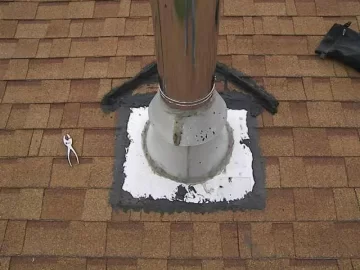 100_4611_640x480.JPG35.5 KB · Views: 7,019
100_4611_640x480.JPG35.5 KB · Views: 7,019 -
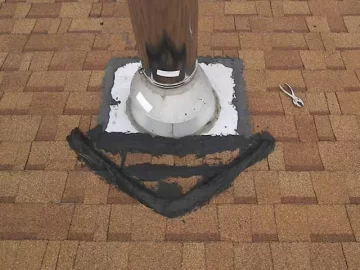 100_4612_640x480.JPG37.7 KB · Views: 4,508
100_4612_640x480.JPG37.7 KB · Views: 4,508 -
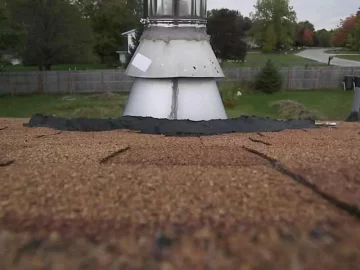 100_4613_640x480.JPG25.4 KB · Views: 4,053
100_4613_640x480.JPG25.4 KB · Views: 4,053 -
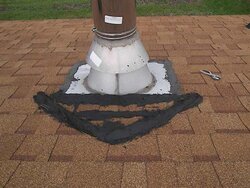 100_4614_640x480.JPG36.4 KB · Views: 3,885
100_4614_640x480.JPG36.4 KB · Views: 3,885 -
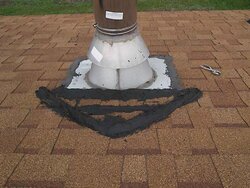 100_4615_640x480.JPG36.7 KB · Views: 3,915
100_4615_640x480.JPG36.7 KB · Views: 3,915 -
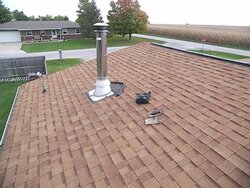 100_4616_640x480.JPG42.9 KB · Views: 4,360
100_4616_640x480.JPG42.9 KB · Views: 4,360 -
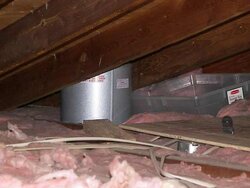 100_4621_640x480.JPG22.1 KB · Views: 3,782
100_4621_640x480.JPG22.1 KB · Views: 3,782


